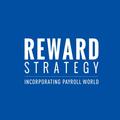The great labour market cooling
 Reward Strategy
Reward StrategyRising costs, AI adoption and policy uncertainty shaping hiring trends

Today’s latest Office for National Statistics (ONS) labour market data paints a picture of a steadily cooling jobs market, with falling vacancies, stubbornly high employment costs, and a shifting hiring landscape that could reshape opportunities, particularly for young and entry-level workers.
Vacancies have now dropped to their lowest level since early 2015, with a quarterly fall of 44,000 adding to the steady decline since last autumn’s Budget. This cooling has been mirrored by a gradual rise in unemployment, which now sits at 4.7%, up from 4.4% in the three months to March.
Young people at risk without targeted intervention
James Cockett, Senior Labour Market Economist at the CIPD, warns that the combination of rising national insurance contributions and minimum wage increases is particularly biting in hospitality and retail – sectors that traditionally offer crucial entry points into the workforce.
“As employment costs increase, it’s critical that employers aren’t dissuaded from hiring young people,” he said. “The government needs to go further than the youth guarantee and introduce an apprenticeship guarantee for all 16 to 24-year-olds… Better training and employment opportunities will ensure they start their working lives on the right foot while helping employers build future talent pipelines.”
For some employers, high costs and economic uncertainty are accelerating the search for efficiencies through technology. Michael Stull, Managing Director at ManpowerGroup UK, noted, “It’s little wonder many are looking to AI and automation to drive up efficiencies and to drive down expenditure. But this unfortunately means this year will be tougher for new graduates, school and college leavers, as entry-level roles see the greatest decline because of automation and AI adoption, especially in many white-collar industries.”
While public sector recruitment and pay growth remain relatively resilient for now, Stull cautioned that “this may not last,” and urged for a “greater push for productivity from all sectors” to support sustainable growth.
The pay and interest rate puzzle
On wages, the latest figures show annual growth of 5%, down from 5.9% earlier in the year, but still strong enough to give the Bank of England pause as it weighs up interest rate cuts.
Rob Morgan, Chief Investment Analyst at Charles Stanley, pointed out that “falling wage growth is more of a slow burn,” and that the balance between easing rates and controlling inflation remains a key challenge.
For reward and payroll leaders, this shifting landscape is likely to create competing pressures: ensuring pay remains competitive in the face of inflationary erosion, while balancing budgetary constraints and the potential impact of automation on workforce structures.
What is clear from today’s figures is that the UK labour market is in a delicate phase of adjustment – one where hiring caution, technological disruption, and policy decisions will be just as influential on pay and reward strategies as traditional economic cycles.
